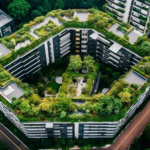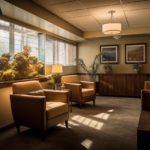Crafting Comfort: Mastering the Creation of Welcoming and Functional Temporary Living Spaces
Introduction: Embracing the Art of Designing Comfort
In the realm of interior design, the concept of comfort reigns supreme. It transcends mere aesthetics, weaving its way into the very fabric of our living spaces, shaping our experiences, and nurturing our well-being. Nowhere is this more evident than in the realm of temporary living spaces. Whether it’s a cozy Airbnb rental, a stylish vacation home, or a meticulously curated temporary office, the art of designing comfort takes center stage, blending practicality with aesthetic allure to create spaces that are both inviting and functional.
Understanding the Essence of Temporary Living Spaces
Temporary living spaces occupy a unique niche in the world of interior design. Unlike permanent residences, which are tailored to the specific needs and preferences of their occupants, temporary spaces must cater to a diverse array of individuals, each with their own distinct tastes and requirements. This presents a unique challenge for designers, who must strike a delicate balance between versatility and personalization.
The Fundamentals of Designing Comfort
At the heart of every well-designed temporary living space lies a deep understanding of the fundamentals of comfort. This encompasses everything from the layout and flow of the space to the selection of furniture, textiles, and accessories. By paying careful attention to these key elements, designers can create environments that are not only visually appealing but also supremely comfortable to inhabit.
Creating Inviting Atmospheres with Thoughtful Layouts
One of the cornerstones of comfortable design is the thoughtful arrangement of furniture and fixtures to optimize flow and functionality. In temporary living spaces, where flexibility is often paramount, this becomes especially crucial. By strategically positioning key elements such as seating areas, dining spaces, and workstations, designers can maximize usability while maintaining an open and inviting atmosphere.
Elevating Comfort with Luxurious Textiles and Finishes
In the realm of interior design, textiles play a pivotal role in shaping the overall look and feel of a space. From sumptuous upholstery fabrics to plush area rugs, the right textiles can elevate comfort to new heights, transforming even the most modest of spaces into havens of relaxation and luxury. In temporary living spaces, where the goal is to create a home away from home, the selection of textiles becomes all the more important, providing a tactile sense of comfort that resonates with guests on a visceral level.
Striking the Perfect Balance between Form and Function
At its core, comfortable design is about more than just aesthetics—it’s about functionality. In temporary living spaces, where every square inch counts, this principle takes on added significance. By prioritizing functionality without sacrificing style, designers can create spaces that are as practical as they are beautiful, ensuring that guests have everything they need to feel at ease during their stay.
Conclusion: Designing Comfort for the Modern Nomad
In the fast-paced world of today, temporary living spaces have emerged as sanctuaries for the modern nomad, offering a respite from the chaos of everyday life. By mastering the art of designing comfort, designers can create environments that not only meet the needs of their guests but exceed their wildest expectations, leaving a lasting impression that lingers long after checkout.











